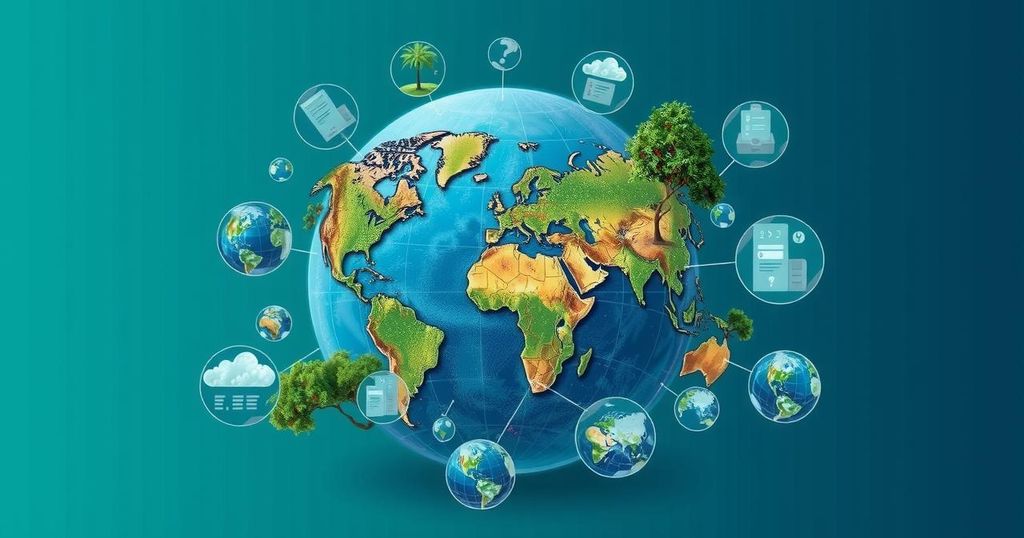On October 21, 2024, the International Fund for Animal Welfare (IFAW) launched comprehensive guidelines aimed at aiding governments in incorporating wildlife conservation into their Nationally Determined Contributions (NDCs) at COP16. These guidelines provide ten actionable steps for countries to enhance wildlife roles in carbon sequestration and climate resilience, fundamentally suggesting that wildlife conservation is integral to effective climate action, especially for biodiversity-rich regions.
A new set of guidelines has been launched to help governments and policymakers incorporate wildlife conservation into their climate action plans, particularly in their Nationally Determined Contributions (NDCs). This initiative was unveiled at the 16th Conference of the Parties to the UN Convention on Biological Diversity, reflecting the pressing need for nations to adjust their climate strategies ahead of the 2025 NDC updates mandated by the Paris Agreement. Published by the International Fund for Animal Welfare (IFAW), these guidelines outline practical steps that countries can adopt to enhance the role of wildlife in promoting carbon sequestration and climate resilience. Simon Addison, IFAW’s Climate Advisor, emphasized the significance of these guidelines, remarking that they offer a roadmap for governments to leverage wildlife conservation as a means to mitigate climate change and improve adaptation strategies. The document provides ten actionable steps designed to facilitate the integration of wildlife considerations into national climate policies, thus reinforcing both climate action and biodiversity preservation. Historically, climate plans tend to neglect wildlife conservation, particularly among biodiversity-rich regions that are also vulnerable to climate impacts. The new guidelines underscore the necessity of including wildlife in greenhouse gas inventories and climate strategies, pointing to the potential losses that may arise from such omissions. Moreover, the guidelines assert that safeguarding and restoring key species—such as elephants, whales, and apex predators—plays a crucial role in enhancing ecosystem health and carbon capture. The document offers clarity on practical integration steps, from pinpointing species requiring protection to aligning conservation activities with broader policy frameworks. Economic considerations are also addressed, revealing how wildlife conservation efforts can promote economic growth, especially in Least Developed Countries rich in biodiversity. These initiatives can lead to climate-resilient development and offer sustainable livelihood opportunities while opening avenues for new carbon finance resources. The complete guidelines can be downloaded at the IFAW website.
The integration of wildlife conservation into national climate action plans emerges as a critical strategy in addressing the dual challenges of biodiversity loss and climate change. The recent guidelines provided by IFAW represent a significant advancement in this arena, targeting governments preparing their Nationally Determined Contributions (NDCs) for the upcoming updates in 2025. The guidelines seek to ensure that wildlife is recognized not only for its intrinsic value but also for its pivotal role in supporting ecosystems that are vital for carbon sequestration and climate resilience. Currently, many countries, even those with rich biodiversity, fail to incorporate wildlife conservation into their climate strategies, potentially undermining their efforts to combat climate change while protecting precious ecosystems. The delay in addressing this integration potentially yields a missed opportunity to bolster climate resilience across various regions globally.
The launch of the wildlife conservation guidelines by IFAW provides a timely and essential framework for nations seeking to enhance their climate action plans. By emphasizing the importance of integrating wildlife conservation into national strategies, the guidelines not only advocate for biodiversity protection but also propose actionable steps that resonate with the goal of enhancing climate resilience. As highlighted by Simon Addison, these guidelines transform wildlife conservation into a central element of climate action, paving the way for more holistic and effective responses to the climate crisis. Governments are encouraged to adopt these guidelines to ensure that both climate stability and biodiversity are prioritized in future environmental policies.
Original Source: www.ifaw.org






